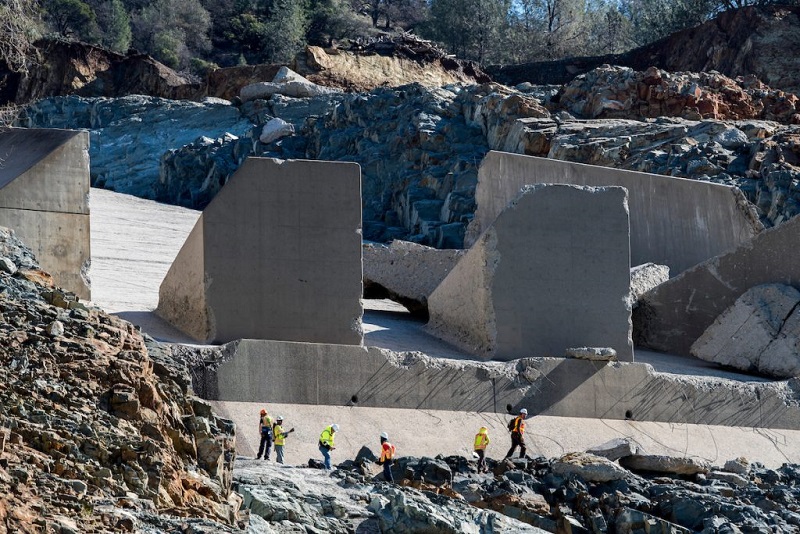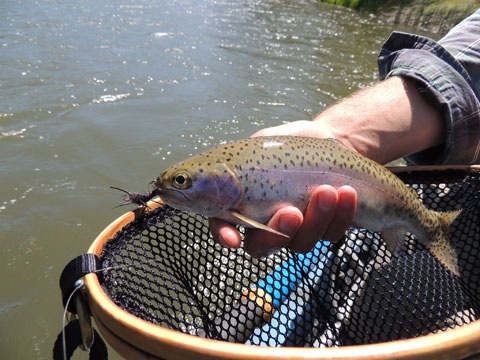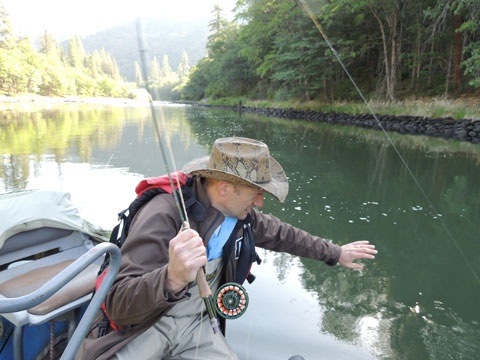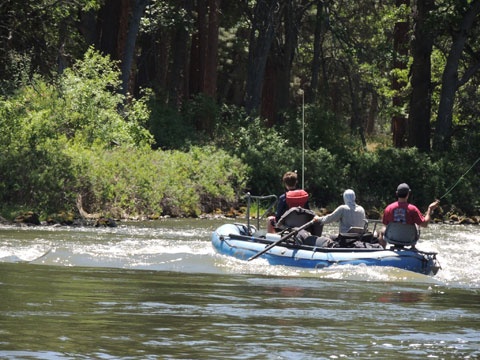Klamath River - Upper - CA Fish Report for 4-13-2017
Bobberin’ down the Upper Klamath
Klamath River - Upper - CA - Hornbrook, CA (Siskiyou County)
by Gary Lewis
4-13-2017
When I started fly-fishing, I took a lot of guys with me. We were all 12 and 13 and lived then on the banks of the Columbia. We’d fish the mouths of tributary streams for trout and panfish then prospect up the little creeks for wild rainbows. We heard of people getting in on big dry fly hatches, but we mostly drifted nymphs or floated attractor dries.
No one used a strike indicator in those days. We high-sticked or watched the end of the fly line.
One of those boys I used to fish with was Mike Tom and now he has a couple boys of his own. We met up at the lodge at the Running Y Ranch the night before our float down the river.
Early in the morning, Mike and Jordan, 15, and my friend Richard Ross waded in while I made the shuttle with our guides from Roe Outfitters, Brandon Worthington and Tony Beals.
When we returned, Mike, Jordan and Rich were ankle deep, and Jordan had a rainbow on the line and in the air.
One of my favorite rods is a Cabela’s LSi, a six-weight rigged with a floating line and a WLx reel. When we headed down to fish the Upper Klamath River last week, I put the LSi in the raft. It’s a decent rod for casting a dry, but is a great choice when running a tandem nymph rig. I set the rod up that way and put a Thingamabobber, which is a loop-on-the-line strike indicator that looks a lot like a bubble in the water. Spin-fisherman might call it a bobber, but fly-fishermen call it an indicator. They come in various colors, I'm partial to red.
We fished three miles of the Klamath’s Wild and Scenic, a stretch of stream with long rapids and short holes, lots of whitewater but no class 4s. Here the river winds through a steep gorge, just six miles from the California border.
Its flow managed for power generation, the river is held back overnight then more spill is allowed when people wake up and turn the lights and air conditioning on.
Unlike the Keno Reach rainbows upstream, these trout are oriented to look up. In May and June, before the sun hits the water, they sip mayflies and midges and smash golden stones and salmonflies. In July and October, there are a lot of hoppers on the banks and enough get blown onto the river that the fish watch for them.
We coaxed our rafts over the rocks then jumped in. Ross and I were in Tony’s boat. In the other boat, with Mike and Jordan, Brandon was on the sticks.
From Tony, I borrowed a 3-weight rigged with a golden stone dry fly. Down toward the tailout in the first drift, I floated the fly down a foam line and watched it disappear in a swirl on the surface. When next we saw it, the fly was stuck firmly in a 14-inch Klamath rainbow.
Richard, in the front of the boat, hooked the next one. These are well-fed wild fish, lightly spotted, like most of the Klamath-strain trout. In this section of the river, they run 10 to 18 inches, smaller than in the Keno Reach, but there are more of them. And, on a good day, an early riser can expect to get 20 grabs on top before the sun hits the water and the fish begin to feed subsurface.
We fished and drifted. I’ve seen a raft flip on this river, so when our raft began to drag on some rocks, I watched with not a little interest as Tony worked us through the end of the rapid. Then I looked down and saw my rod was not where I had left it a moment before. I looked back and there it was, coming down the whitewater without a boat.
“Ummm. Tony…”
In a few seconds, the rod was in the pool below the rapids, behind us by about 50 yards but catching up. Then the river heaved it out and sucked it down. Soon all that was above the water was the red plastic Thingamabobber just below the surface. The fly line was visible a couple of feet down. If I had used a corkie or a piece of yarn, or even the clear or white indicator, we probably never would have seen that rod again.
To me, the Upper Klamath is one of the great rivers of Oregon though oft-ignored because it derives east of the Cascades and away from the state’s population centers then flows out of Oregon into California. It is accessible, well-suited to older kids like us and our new-to-fly-fishing offspring and not so big a person can’t figure it out.
And the trout are eager to take a fly on the surface, at least until the sun hits the water. Then you want to tie on a two-nymph rig and put on a strike indicator. I recommend a red Thingamabobber.
Gary Lewis is the host of Frontier Unlimited and author of John Nosler – Going Ballistic, A Bear Hunter's Guide to the Universe, Hunting Oregon and other titles. Contact Lewis at GaryLewisOutdoors.com.
Photos
< Previous Report
< Previous Report
More Reports
3-5-2017
The Humboldt Bay Bar has a reputation for being a very challenging, even dangerous place to pass through. Author Tom...... Read More

3-3-2017
Oroville Dam work continues around the clock as the dam's spillway becomes the poster child of failing infrastructure. A reality...... Read More

Website Hosting and Design provided by TECK.net



